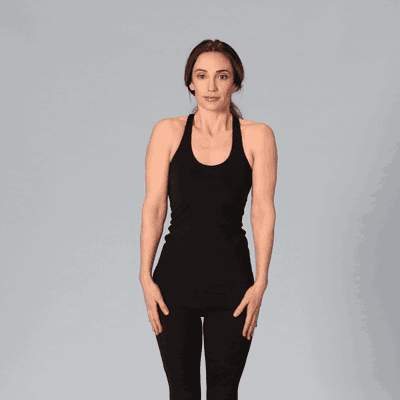Waking up with a stiff neck or feeling a nagging arm pain while reaching for that high shelf can be more than just bothersome—it can be downright debilitating. As you navigate your daily tasks, each twinge or throb might leave you wondering: “Why is this happening, and what can I do about it?” If you’re nodding in agreement, you’re not alone. Many individuals experience neck and arm pain, often interconnected, affecting not just their physical well-being, but also their mental peace. In this guide, we’ll unravel the mysteries behind this discomfort, pinpointing causes, suggesting solutions, and guiding you on when it might be time to seek expert help. So, let’s dive in and work towards a pain-free life together.
Contents
Understanding the Connection Between Neck and Arm Pain
 The human body is a complex network of muscles, bones, nerves, and blood vessels, all working intricately together. Particularly, the neck and arm share an intertwined relationship when it comes to pain and its origins.
The human body is a complex network of muscles, bones, nerves, and blood vessels, all working intricately together. Particularly, the neck and arm share an intertwined relationship when it comes to pain and its origins.
The neck consists of seven vertebral bones cushioned by discs. These vertebral bones house the spinal cord, from which nerve roots branch out. These nerve roots travel down the neck and into the arm, supplying sensation and enabling movement.
So, what does this mean for your pain?
When there’s an issue in the cervical spine—be it a herniated disc, bone spurs, or inflammation—it can impinge or irritate these nerve roots. When this happens, the pain isn’t just localized to the neck. Due to the path these nerves take, the discomfort can radiate down the arm, leading to symptoms like tingling, numbness, or even weakness. This phenomenon is known as referred pain, where the pain is felt at a location different from its source.
In simpler terms, think of the nerve pathways like busy highways. If there’s a roadblock (issue) in the neck, the traffic (pain signals) can get rerouted, causing a jam (pain or discomfort) further down the road, in this case, the arm.
Common Causes of Neck and Arm Pain

Pain in the neck and arm can be due to a variety of reasons. These range from simple muscle strains to more complex neurological issues. Let’s explore some of the most common culprits behind this discomfort:
- Muscle Strains and Sprains: Overexertion, poor posture, or sleeping in an awkward position can lead to muscle strains in the neck, which can cause pain that radiates down the arm. Similarly, ligaments can get stretched too far, leading to sprains.
- Cervical Herniated Disc: The cervical discs act as cushions between the neck’s vertebrae. If a disc herniates or bulges out, it can press on a nerve root, leading to pain that may shoot down the arm.
- Cervical Spondylosis (Arthritis): Age-related changes can lead to wear and tear on the neck’s joints and discs. This degeneration can result in bone spurs that press on nerve roots.
- Thoracic Outlet Syndrome: This condition arises when blood vessels or nerves between the collarbone and first rib get compressed. This can lead to pain in the neck and shoulder, radiating down the arm.
- Cervical Radiculopathy: This refers to nerve pain caused by pressure on the cervical nerve roots due to conditions like herniated discs or spinal stenosis.
- Pinched Nerve: When excessive pressure is applied to a nerve by surrounding tissues, such as bones, cartilage, or muscles, it can cause pain that radiates from the neck to the arm.
- Rotator Cuff Injuries: While primarily a shoulder issue, injuries to the rotator cuff can result in pain that spreads up to the neck or down the arm.
Understanding the root cause of neck and arm pain is essential in directing treatment and ensuring a swift recovery. If you’re unsure of the cause of your pain, it’s always best to consult with a healthcare professional.
The Role of Posture and Ergonomics

In today’s increasingly digital world, we find ourselves hunched over screens more often than not. This new norm, combined with poorly designed workspaces, can wreak havoc on our necks and arms. Let’s delve into how our daily posture and the ergonomics of our environment play a significant role in the development of pain in these areas.
- Desk Job Dilemmas: Spending long hours at a desk, especially if your computer monitor is not at eye level or if you’re frequently looking down at a smartphone, can strain your neck muscles, leading to pain that radiates down the arm.
- Chair Challenges: An unsupportive chair that doesn’t maintain the natural curve of your spine can cause you to slouch. Over time, this poor posture can result in muscle fatigue and tension in both the neck and arms.
- Keyboard and Mouse Misplacement: If your keyboard is too high or too far away, you might extend your arms and raise your shoulders, resulting in tension and discomfort. Similarly, an improperly positioned mouse can force you to overreach, straining your shoulder and arm.
- Screen Strain: Staring at screens, whether it’s a computer, phone, or tablet, without regular breaks can cause ‘tech neck’—pain and strain resulting from the downward angle of the head.
- Carrying Heavy Bags: Lugging around heavy bags or backpacks, especially on one side, can misalign your posture and strain your neck and arm muscles.
- Physical Activities: Tasks that involve repetitive arm movements or maintaining the neck in an awkward position can stress the muscles and ligaments, leading to pain.
The good news is, many of these posture and ergonomic challenges are preventable. Regularly evaluating your workspace, taking frequent breaks, and being mindful of your posture can significantly reduce the onset or exacerbation of neck and arm pain.
Non-Invasive Pain Relief Methods
 Experiencing neck and arm pain can disrupt daily activities, but thankfully there are a number of non-invasive methods that can help alleviate discomfort without the need for surgical intervention. Here are some strategies you can consider:
Experiencing neck and arm pain can disrupt daily activities, but thankfully there are a number of non-invasive methods that can help alleviate discomfort without the need for surgical intervention. Here are some strategies you can consider:
- Cold and Hot Compresses:
- Cold packs can help reduce inflammation and numb the affected area.
- Heat packs can relax and soothe muscles, reducing pain.
- Over-the-Counter Pain Relievers:
- Nonsteroidal anti-inflammatory drugs (NSAIDs) like ibuprofen can reduce pain and inflammation. Always consult with a healthcare provider before starting a new medication.
- Stretching Exercises:
- Gentle stretches can help alleviate tension in the muscles of the neck and arm, and improve flexibility. Remember to keep movements slow and controlled.
- Massage:
- A gentle massage can stimulate blood flow, relax muscles, and provide relief from pain. Consider seeking a licensed massage therapist who specializes in neck and arm pain.
- Ergonomic Pillows and Chairs:
- Using an ergonomic pillow can support the neck while sleeping, and ergonomic chairs can promote better posture during the day, reducing strain.
- Topical Pain Relievers:
- Creams or gels containing menthol or capsaicin can provide temporary relief by numbing the skin.
- Wearing a Soft Neck Collar:
- This can help support the neck and limit motion, giving strained muscles a chance to heal.
Remember, it’s always essential to listen to your body. If you’re unsure about a particular method, or if the pain persists or worsens, it’s crucial to seek advice from a medical professional.
Exercises To Do
Maintaining mobility and strength in the neck and arms can be instrumental in both preventing and managing pain. Here are some exercises to consider. Always consult with a healthcare or physical therapy professional before starting any new exercise regimen.
Neck Tilts

- Sit or stand up straight.
- Slowly tilt your head to one side, bringing the ear towards the shoulder until a gentle stretch is felt on the opposite side.
- Hold for 15-30 seconds, then repeat on the other side.
Neck Turns
- Sit or stand with a straight posture.
- Slowly turn your head to one side until your chin aligns with the shoulder.
- Hold for 15-30 seconds, then turn to the other side.
Shoulder Rolls

- Sit or stand tall.
- Rotate your shoulders in a circular motion, both forward and backward, for 10-15 times each.
Wall Push-Ups
- Stand about two feet away from a wall, facing it.
- Place your hands on the wall at shoulder height.
- Bend your elbows and lean towards the wall, then push yourself back to the starting position.
- Repeat 10-15 times.
Towel Stretch

- Hold a towel with both hands behind your back, one hand from above your shoulder and the other from below.
- Gently pull the towel up with the top hand, creating a stretch in the lower arm.
- Hold for 15-30 seconds, then switch arms and repeat.
Arm Reaches
- Sit or stand with a straight back.
- Extend both arms out in front, then slowly raise them above your head.
- Hold for a few seconds, then lower them back to the starting position.
- Repeat 10-15 times.
Wrist Flexor Stretch

- Extend one arm out in front with the palm facing up.
- Using the other hand, gently press down on the extended hand’s fingers until a stretch is felt in the forearm.
- Hold for 15-30 seconds, then repeat with the other arm.
Remember, these exercises should not cause pain. If they do, stop immediately and consult a healthcare professional. The goal is to improve mobility and alleviate pain, not worsen it.
Medical Treatments and Interventions
When home remedies and exercises don’t alleviate the pain, it may be time to consider medical interventions. Here’s a quick rundown:
- Physical Therapy: A professional can provide targeted exercises and treatments to address the specific cause of your pain.
- Medications:
- Pain Relievers: Over-the-counter options like ibuprofen or naproxen.
- Muscle Relaxants: For muscle spasms causing pain.
- Nerve Pain Medications: Such as gabapentin or amitriptyline.
- Steroid Injections: Can reduce inflammation and provide temporary pain relief.
- Surgery: In extreme cases, procedures like cervical disc replacement or spinal fusion might be considered.
Remember, always consult with a medical professional to determine the best treatment option for your specific situation.
When It’s Not Just Pain: Identifying Serious Symptoms
 While occasional neck and arm pain can be a common discomfort, there are certain red flags that shouldn’t be ignored. If you experience any of the following symptoms, it’s crucial to seek medical attention immediately:
While occasional neck and arm pain can be a common discomfort, there are certain red flags that shouldn’t be ignored. If you experience any of the following symptoms, it’s crucial to seek medical attention immediately:
- Sudden Onset of Sharp Pain: Especially if it’s not linked to a specific incident or movement.
- Weakness or Numbness: If you can’t grip objects, have trouble lifting your arm, or feel numbness spreading through the arm.
- Radiating Pain: Pain that starts in the neck and shoots down the arm, especially if accompanied by tingling or a “pins and needles” sensation.
- Difficulty Breathing or Shortness of Breath: This could be a sign of heart issues, especially if combined with pain radiating to the left arm.
- Pain That Doesn’t Improve with Rest: Constant pain, even when you are resting or sleeping, may indicate a more serious problem.
- Loss of Bowel or Bladder Control: Though rare, it’s a severe symptom that needs urgent attention.
- Fever Accompanied by Neck Pain: This could indicate an infection or another pressing medical condition.
Always prioritize your health. If you’re ever in doubt about a symptom or its severity, it’s always best to err on the side of caution and see a doctor or specialist.
Conclusion
Neck and arm pain, while common, should never be taken lightly. Understanding the causes, practicing preventive measures, and seeking timely interventions can make a significant difference in your quality of life. Remember, while many remedies can be tried at home, some situations call for expert intervention. If you’re experiencing Elbow pain, physical therapy for elbow pain at PhysioMantra can help: Book an online physical therapy session.



